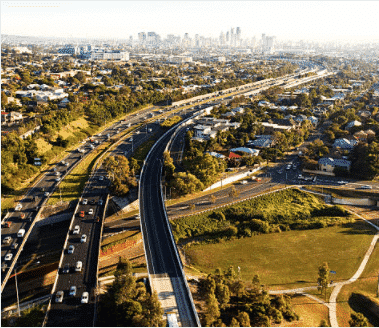With the completion of Tokyo’s unsettling closing ceremony, some Australians are now turning their eyes to the Sunshine State’s preparations for the return of the Games Down Under in ten years.
Because of the IOC’s ‘New Norm’ reforms, Brisbane’s bid was not in competition with other cities, giving governments much more time to consistently and (hopefully) sustainably, budget and plan the 2032 games. Scott Morrison (among many others) has emphasised the invaluable ‘intangible benefits’ the Games will bring to Brisbane. Unfortunately for many Queenslanders, vague future ‘prestige’ is generally insufficient to pay the bills. Will there be concrete benefits as well?
Given its role in the inception of the bid, one focus of the planning process will be transport, as current aging infrastructure is straining to keep up with local needs. Major transport projects such as the Cross River Rail, Brisbane Metro and the Coomera Connector are now slated to be operational by 2032.
This will have further impacts on Queensland’s housing market.
Southeast Queensland (SEQ), especially the Brisbane zone, has been one of Australia’s quickly developing regions, even overtaking Melbourne as the fastest-growing zone during the COVID-19 pandemic.
Despite this, its physical and virtual connectivity is low – only 20% of its population can get to economic centres within half an hour on transport, compared with 90% by car. And among comparable city-regions, SEQ has the second-slowest data speeds.
Congestion has therefore become a steadily increasing problem as early as 2014, when it became clear that transport couldn’t keep up with the current population, let alone the 2 million people predicted to move to Brisbane in the next twenty years. When faced with the question of how to revamp an outdated rail system and a poorly-organised bus grid, mayors of the region posited an unusual solution – to bid for an Olympic Games.

Despite having been a major driver of the now-successful bid, some are concerned that specific transport projects have not been finalised as part of the early plans for 2032. Furthermore, although the Brisbane Games are set to be ‘cost neutral’ at a $4.5 billion budget, said budget is also missing infrastructure costs.
These absences could be chalked up to the still-early timeframe. Or the costs may end up in Queensland’s “ongoing infrastructure budget…which is over $50 billion”, as asserted by Premier Palaszczuk.
As for impacts on property, Brisbane’s current median house prices sit at $678,000. This could rise to $1.5 million by 2032, according to predictions made by Property Investment Professionals of Australia.
SEQ property prices are already the fastest growing on the East Coast of Australia, especially as working arrangements become more flexible and city residents look to escape harsh lockdowns. But it looks like the Olympics will become the cherry on top of the rapidly growing cake that is Queensland’s capital, and improving transport will play a major role in driving housing prices up further.
Follow Maddie’s journalism journey on Twitter.